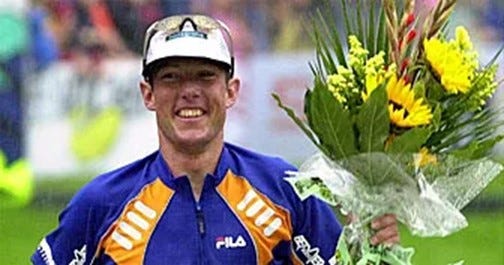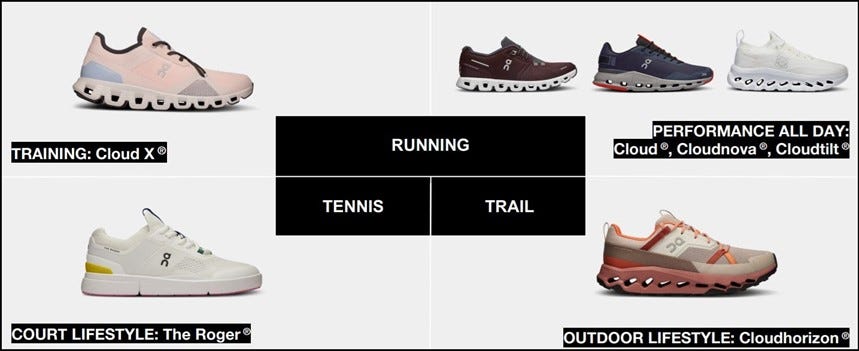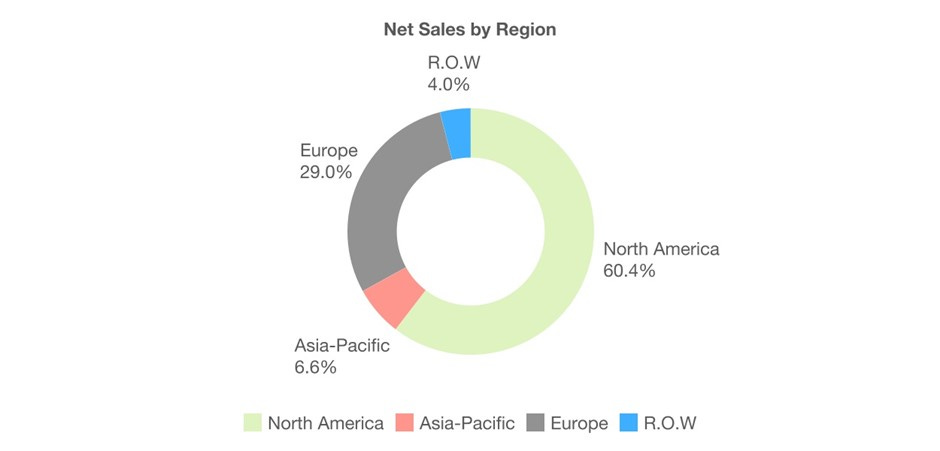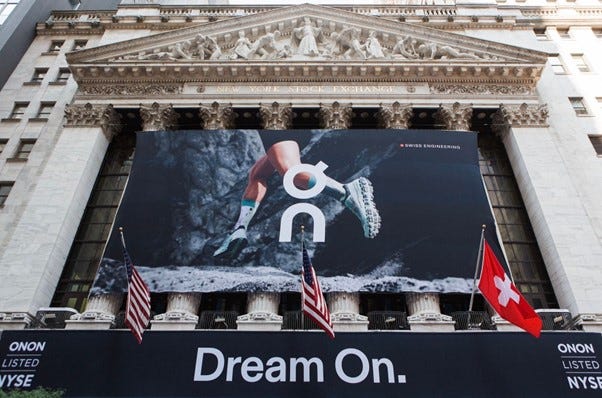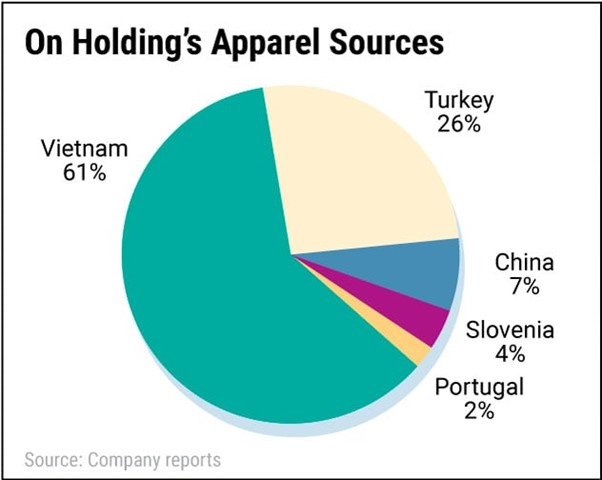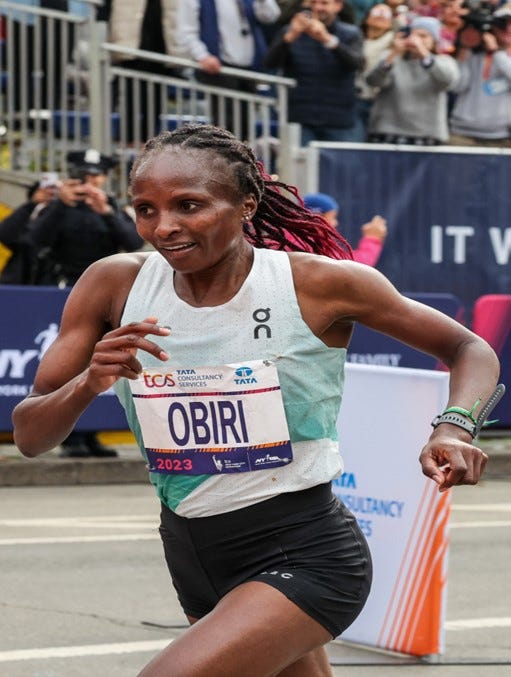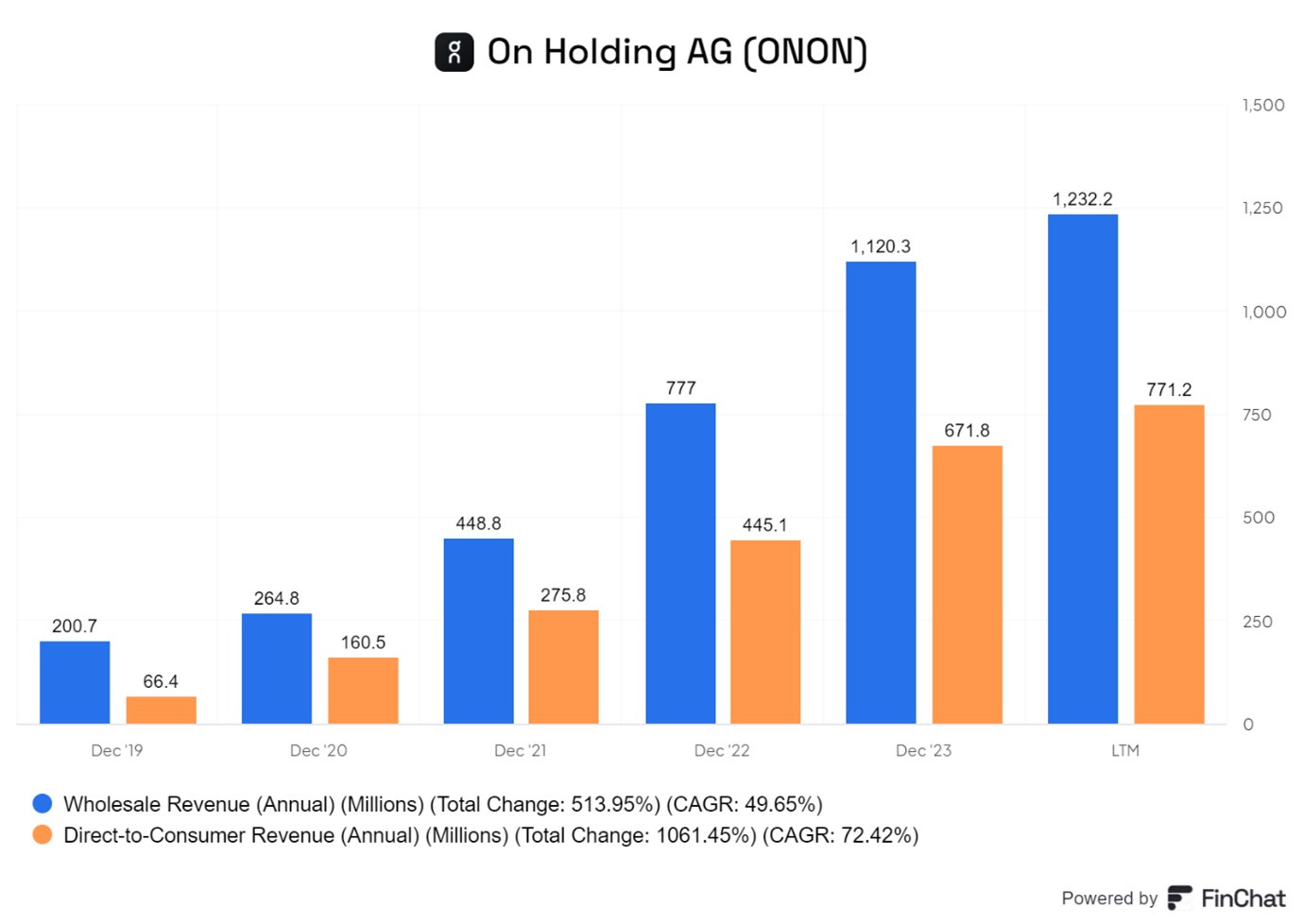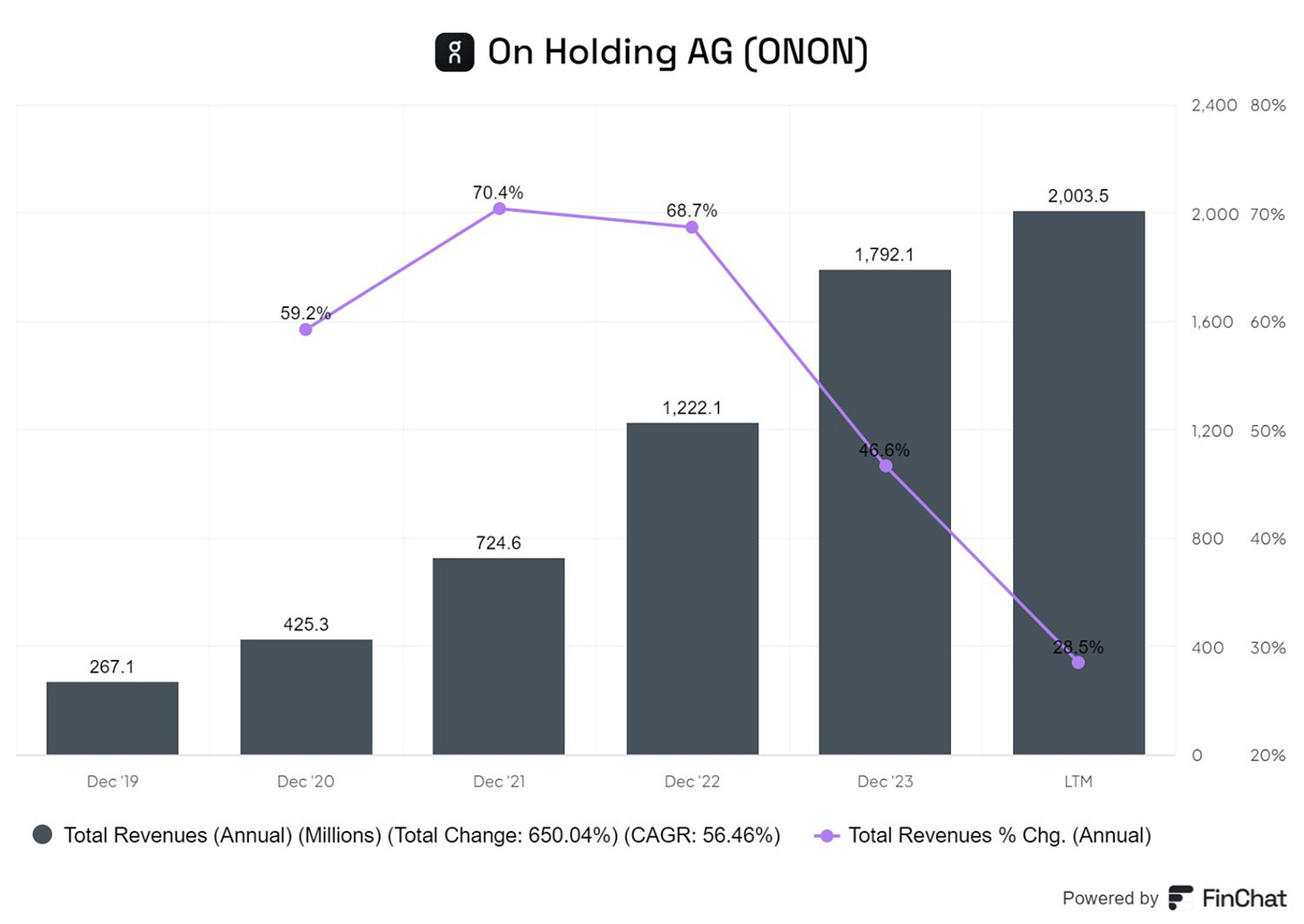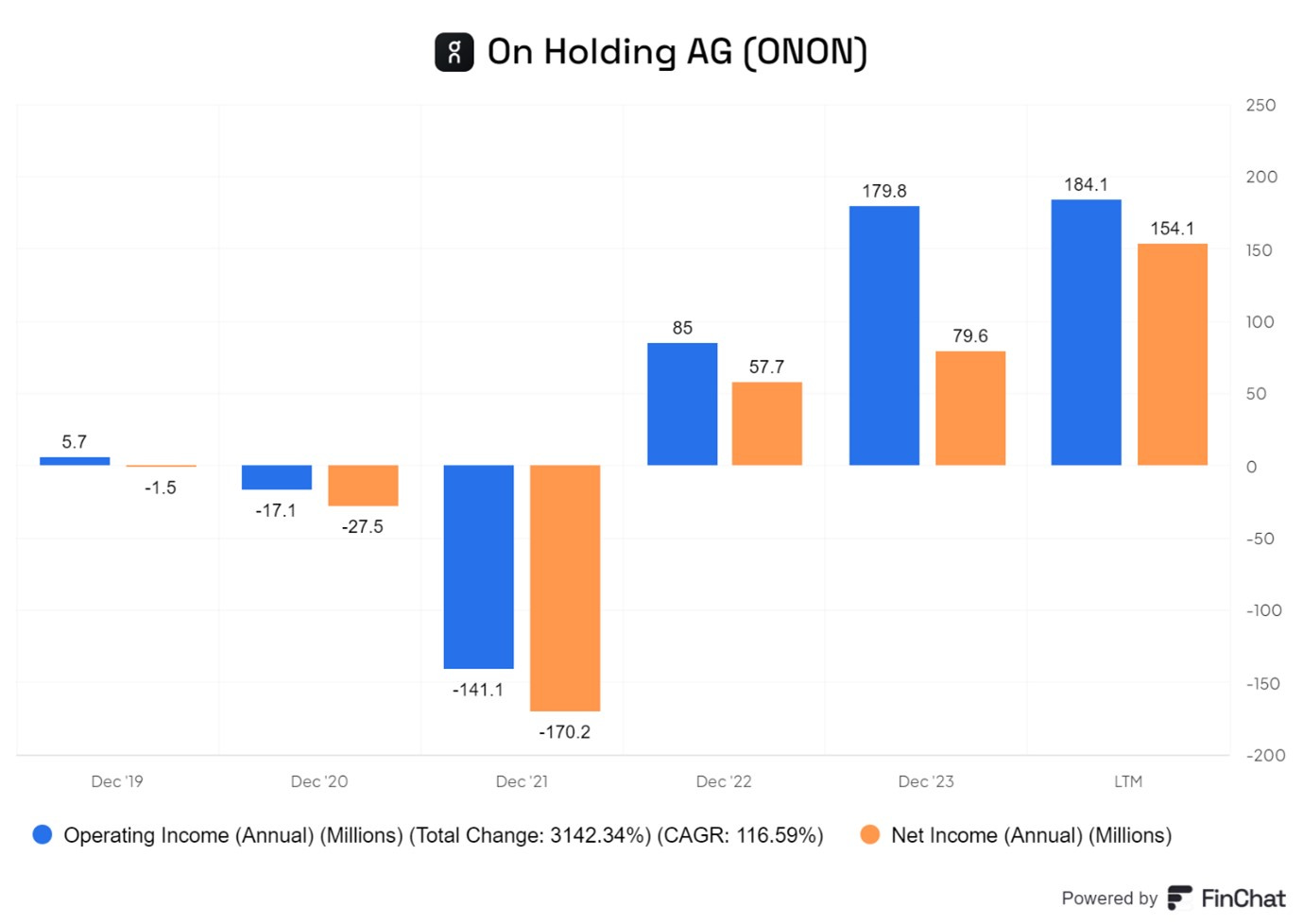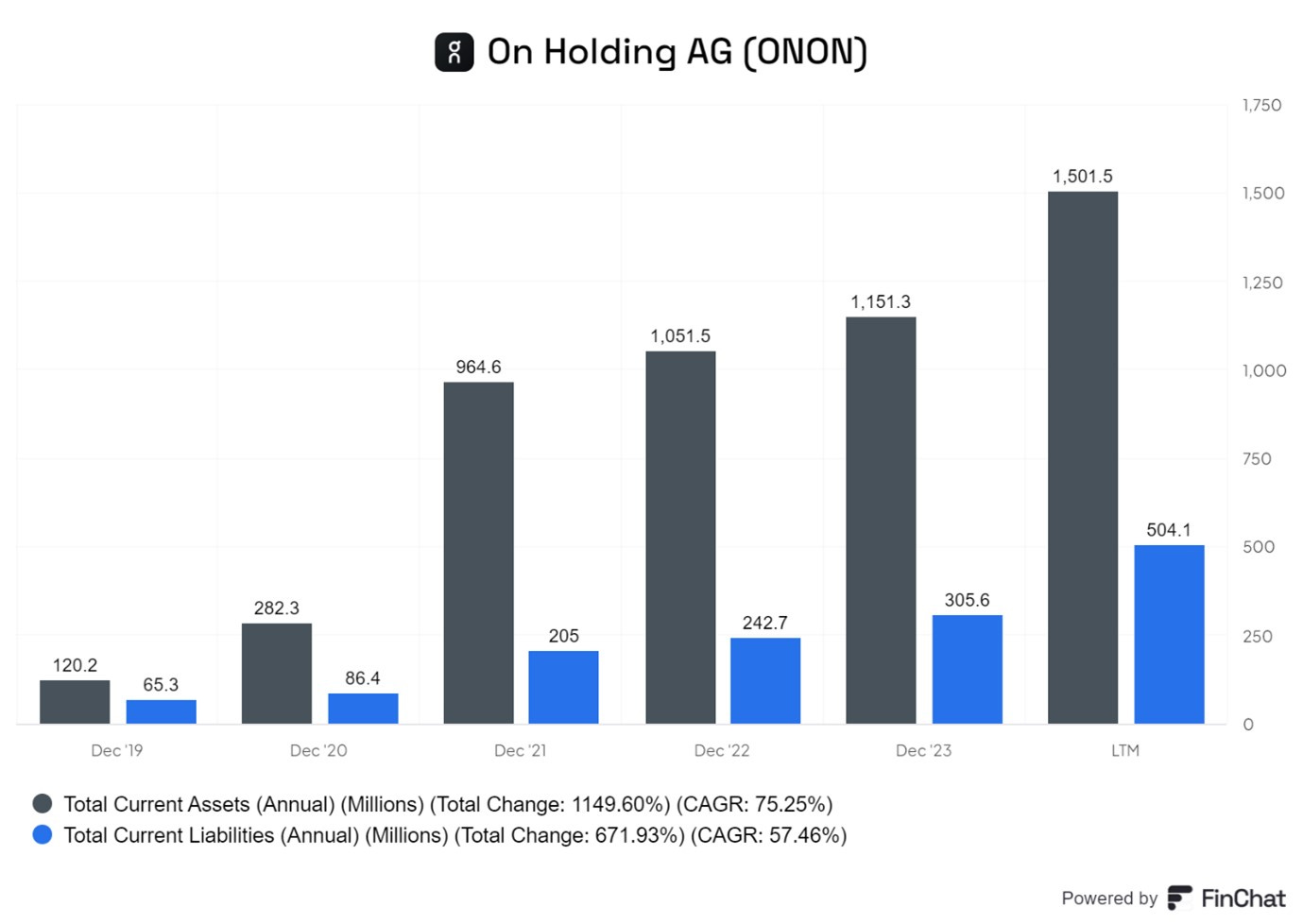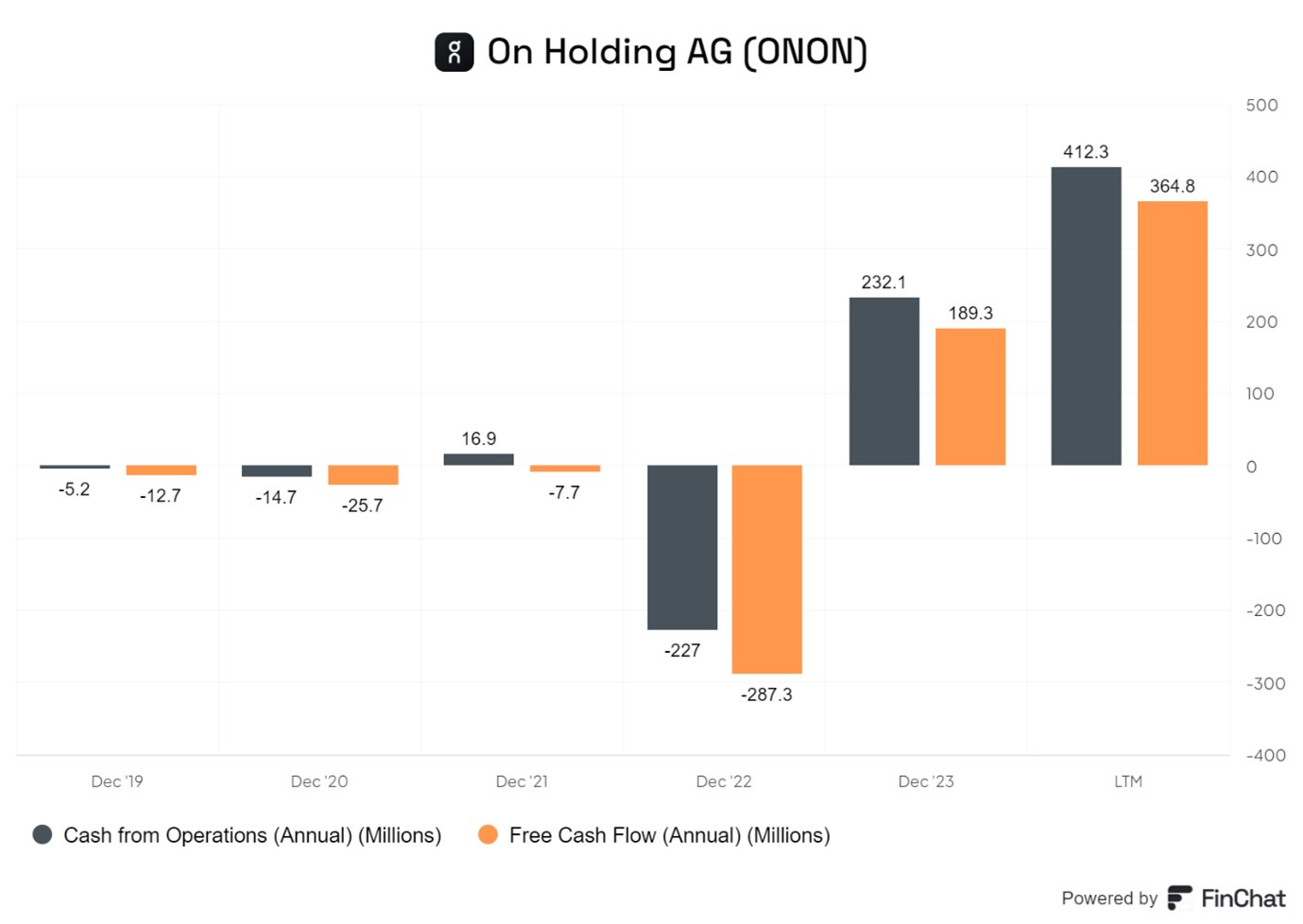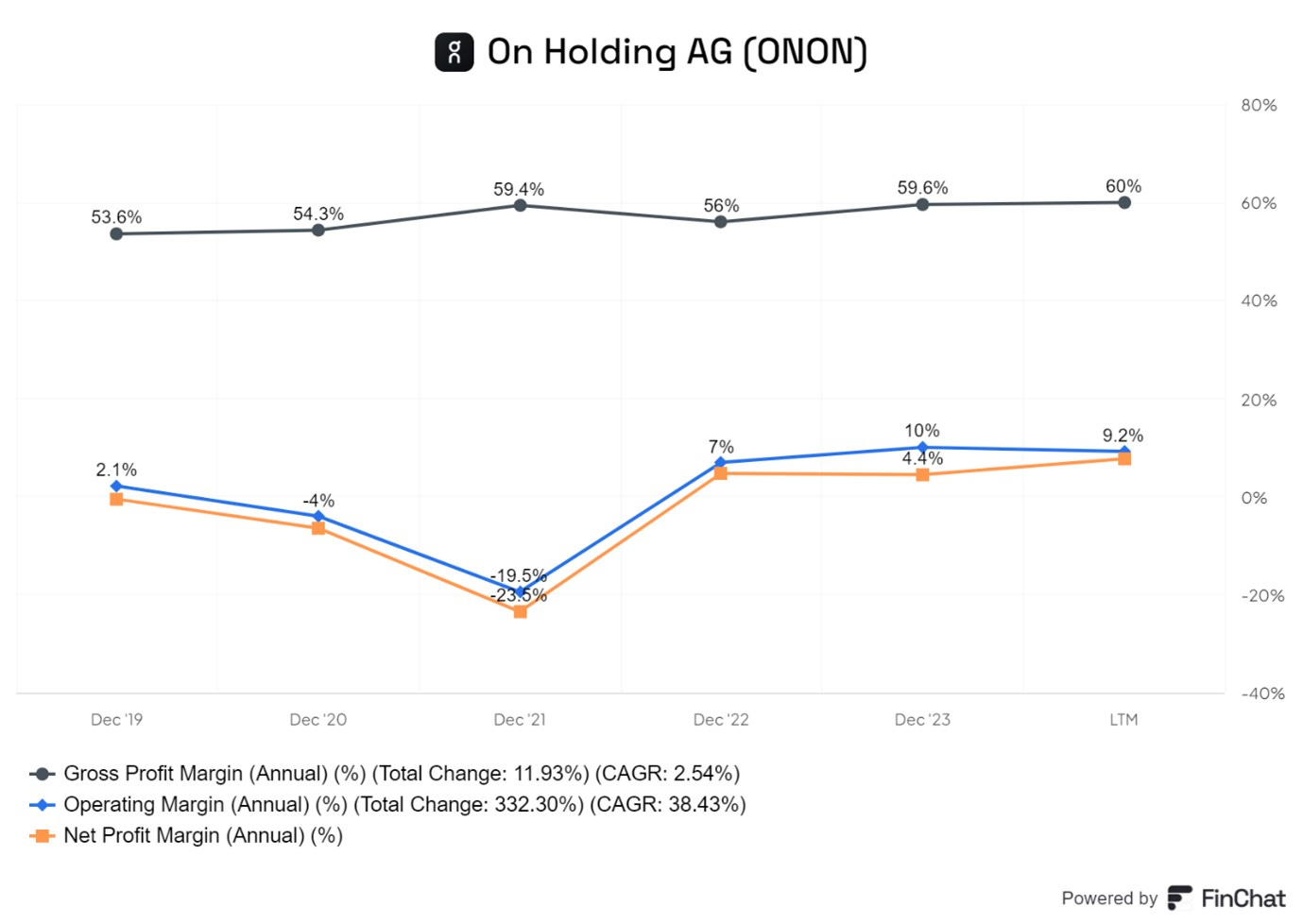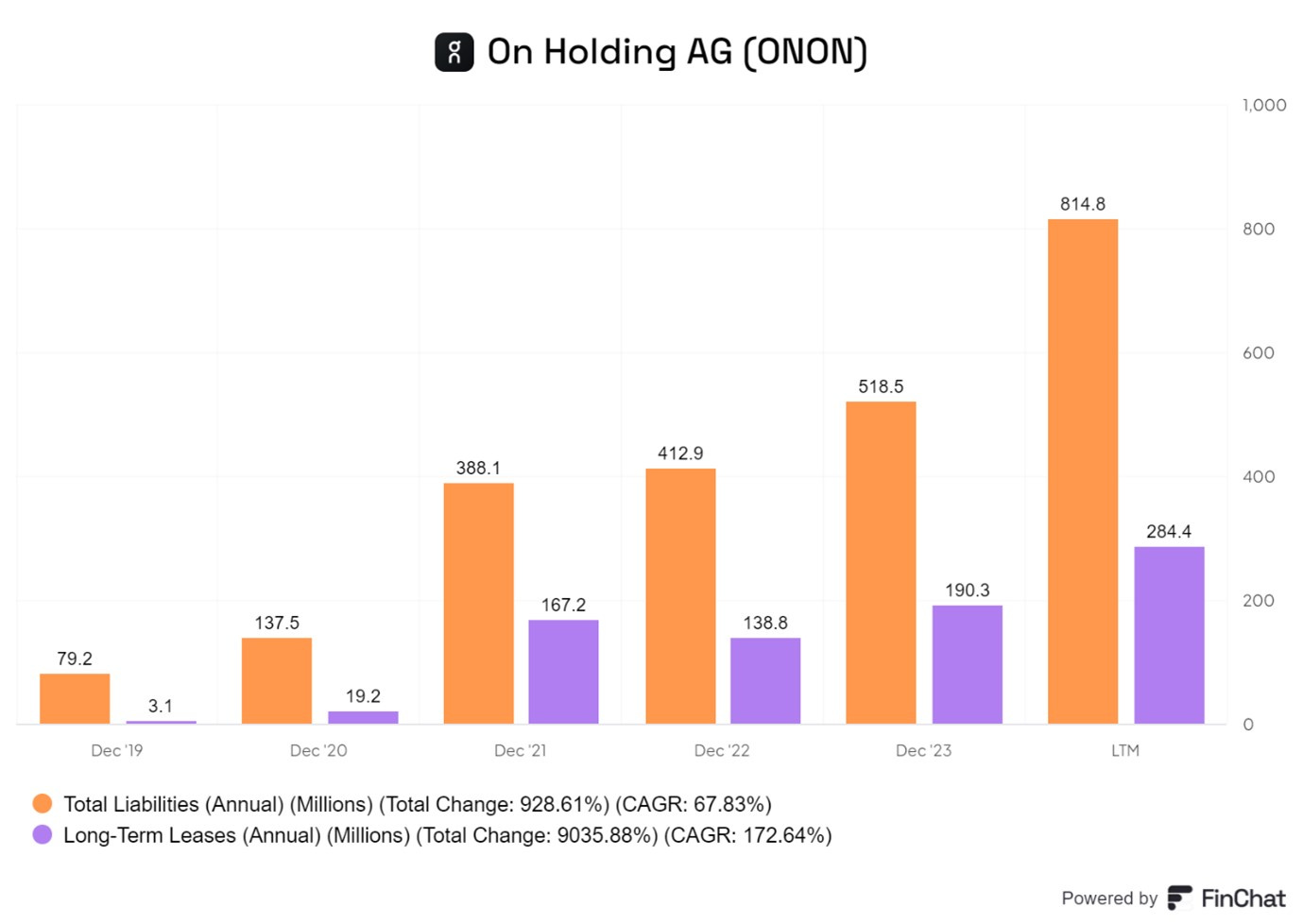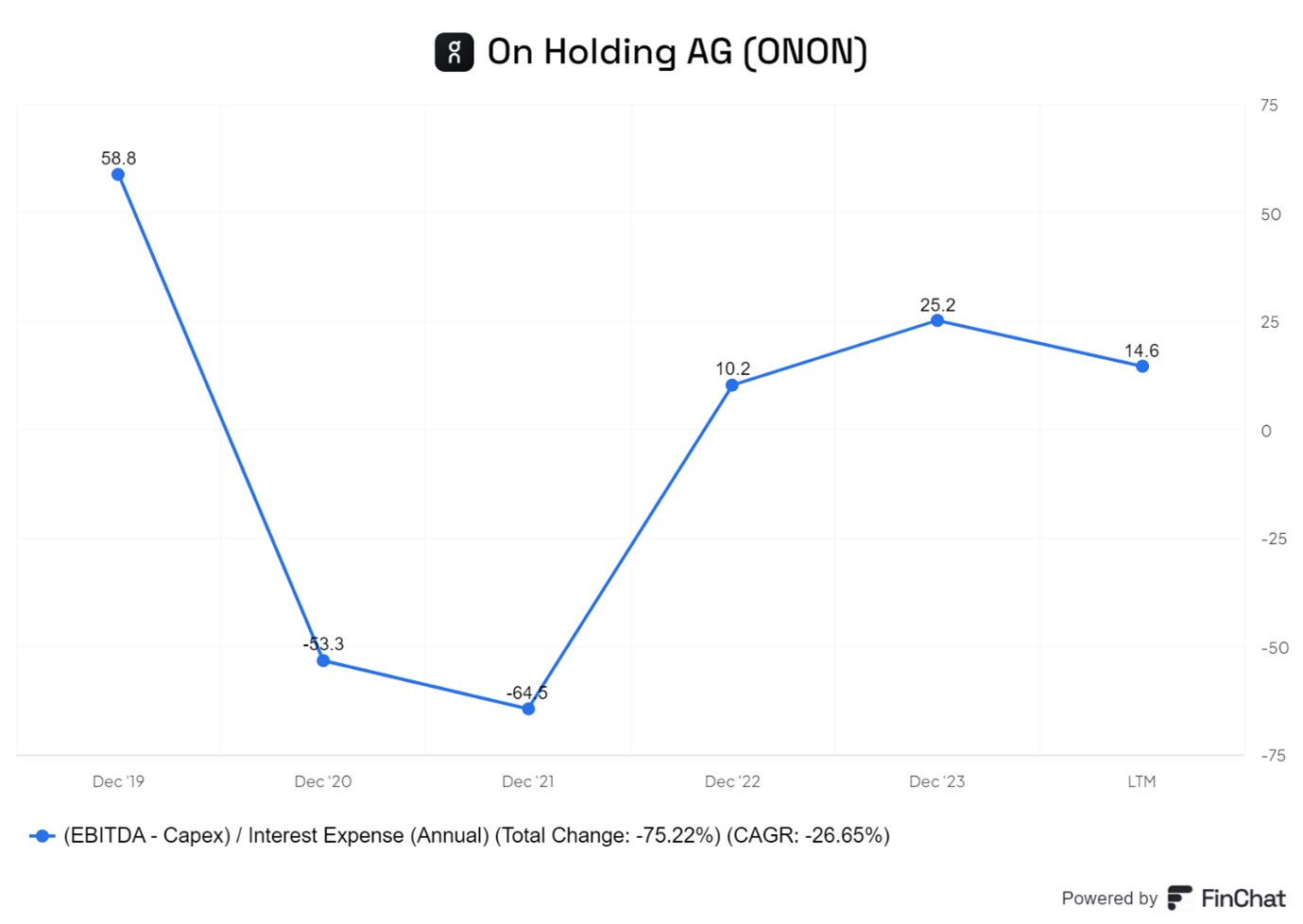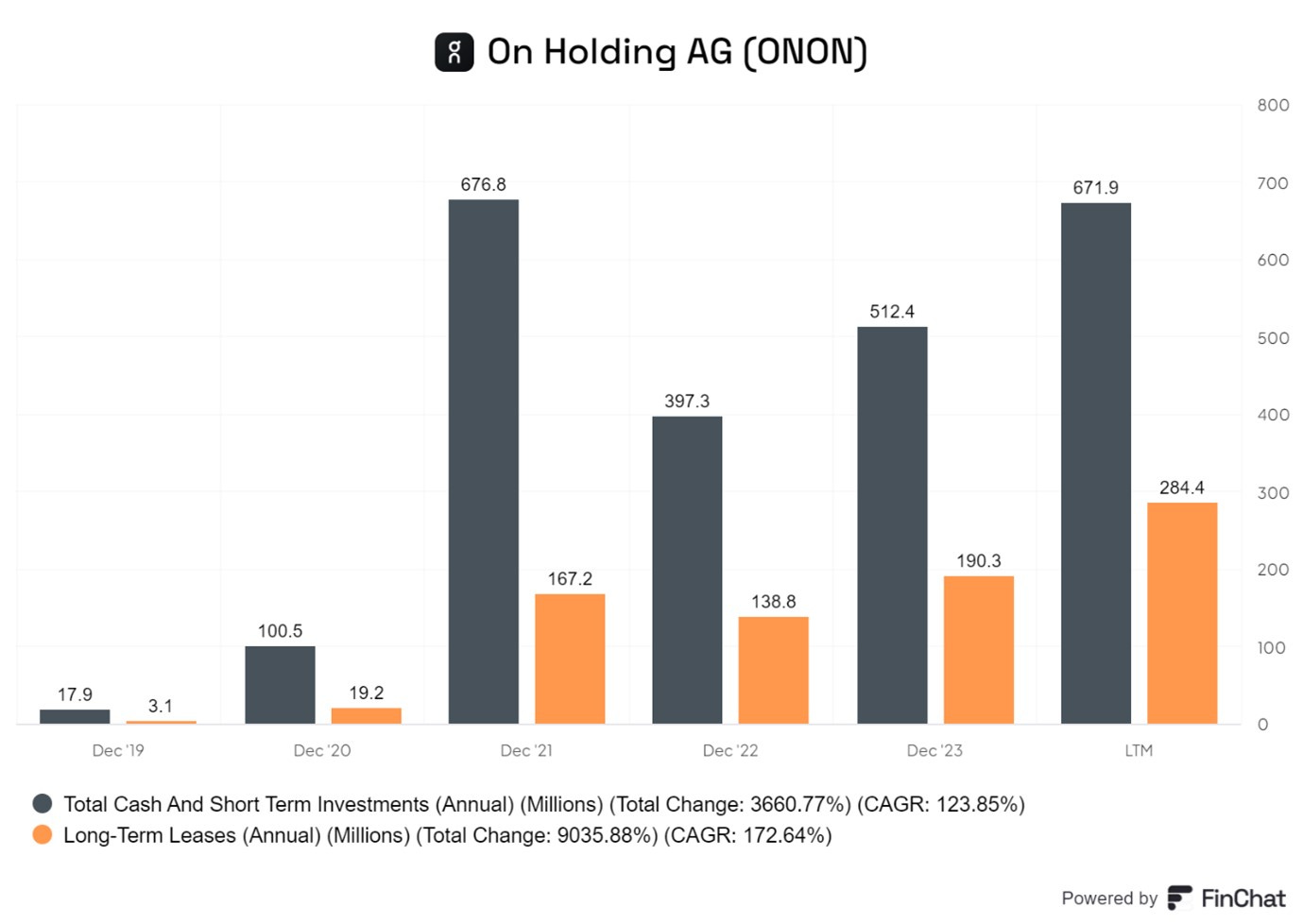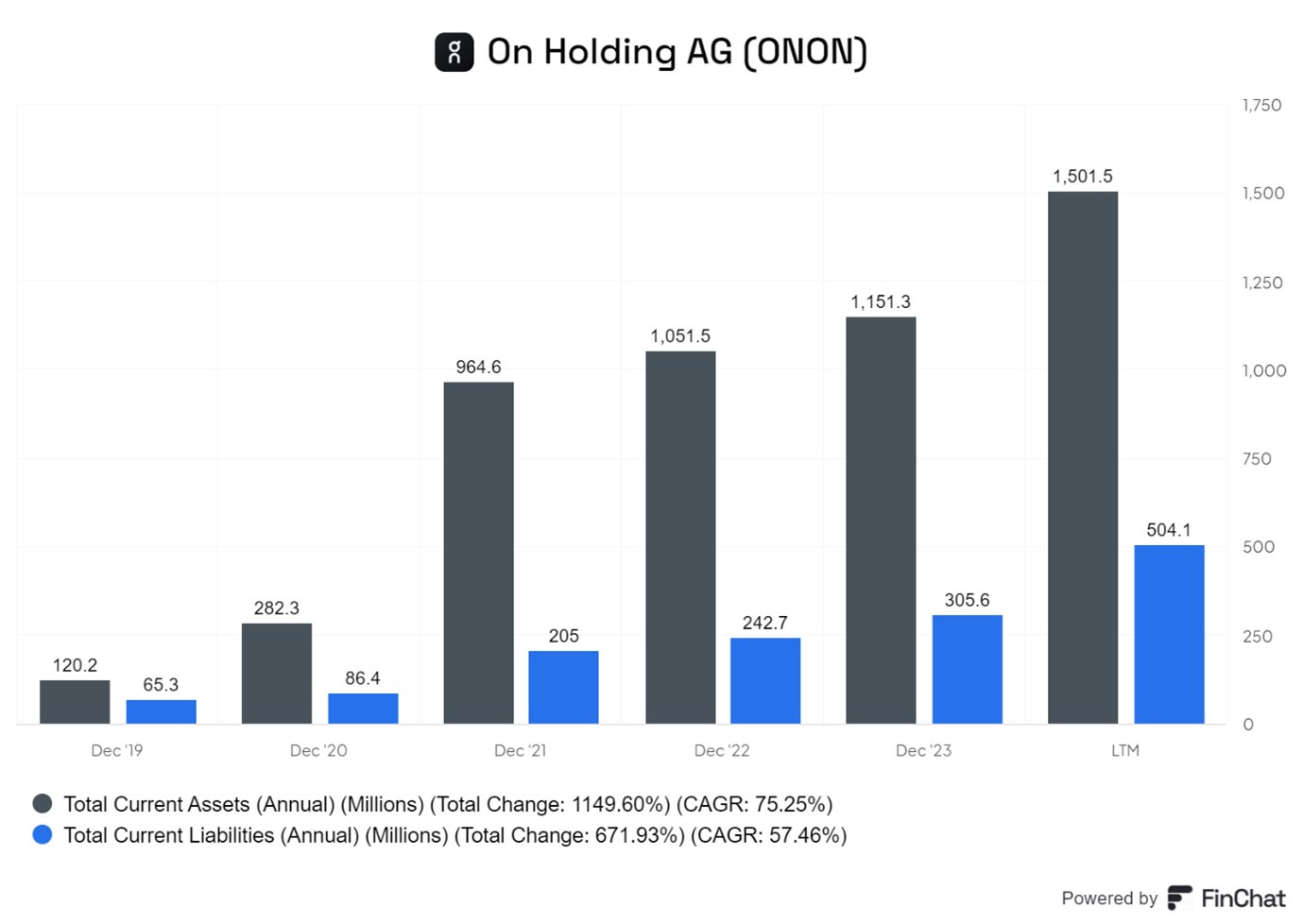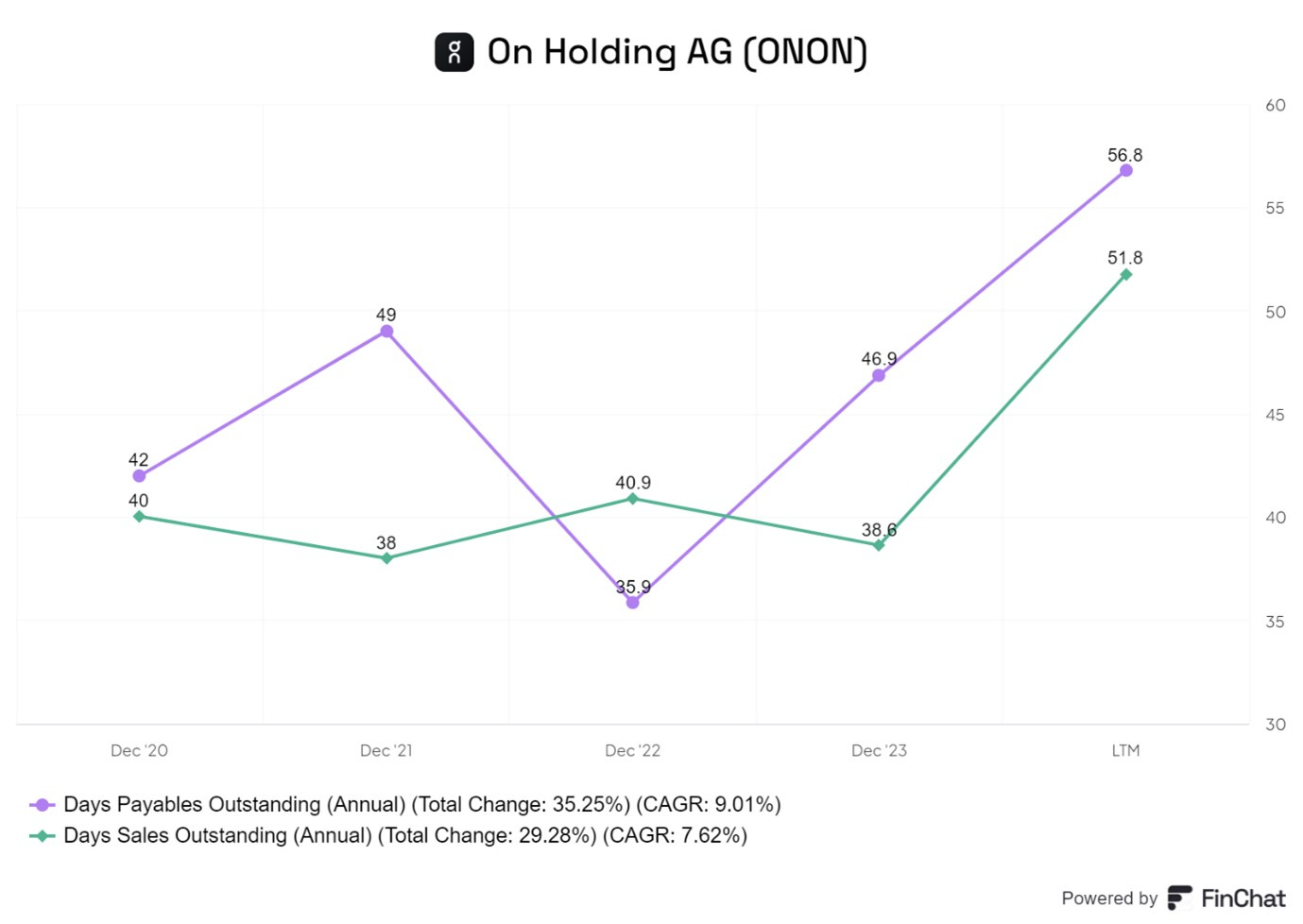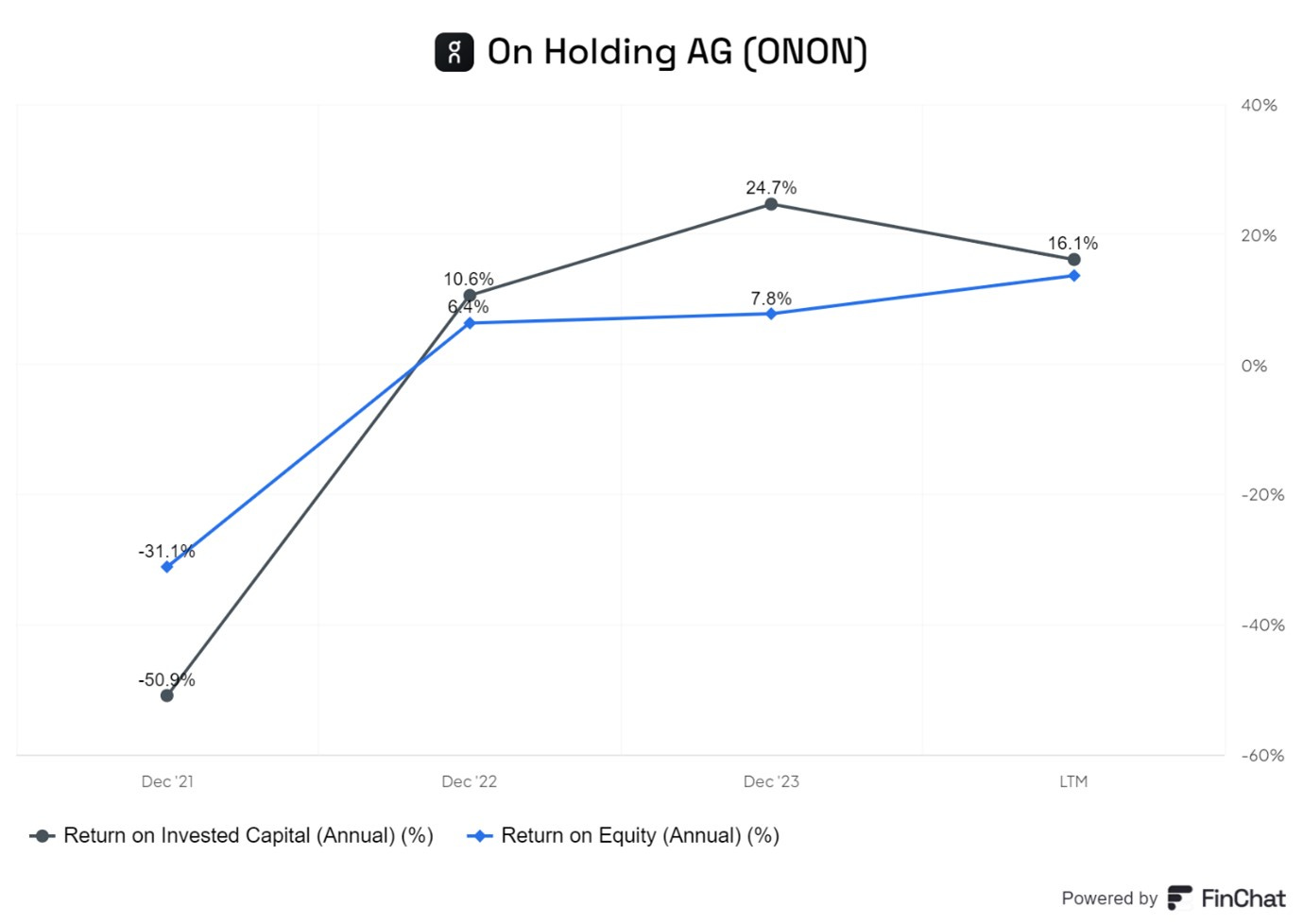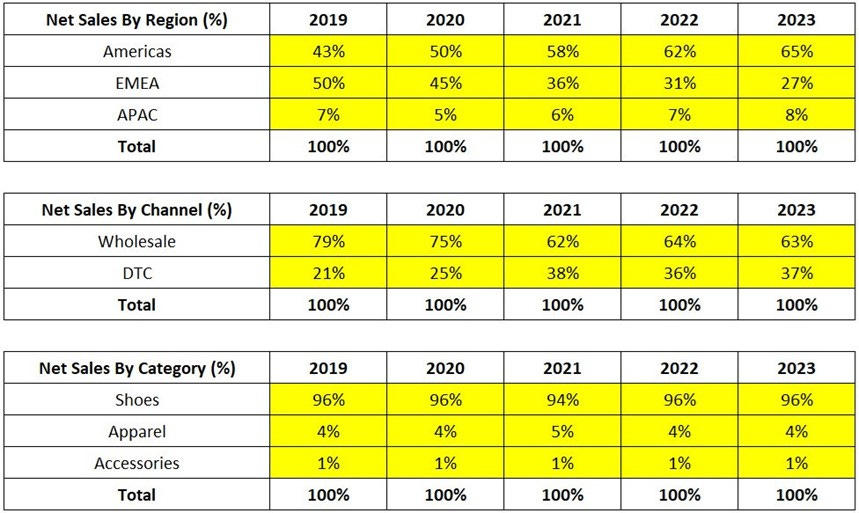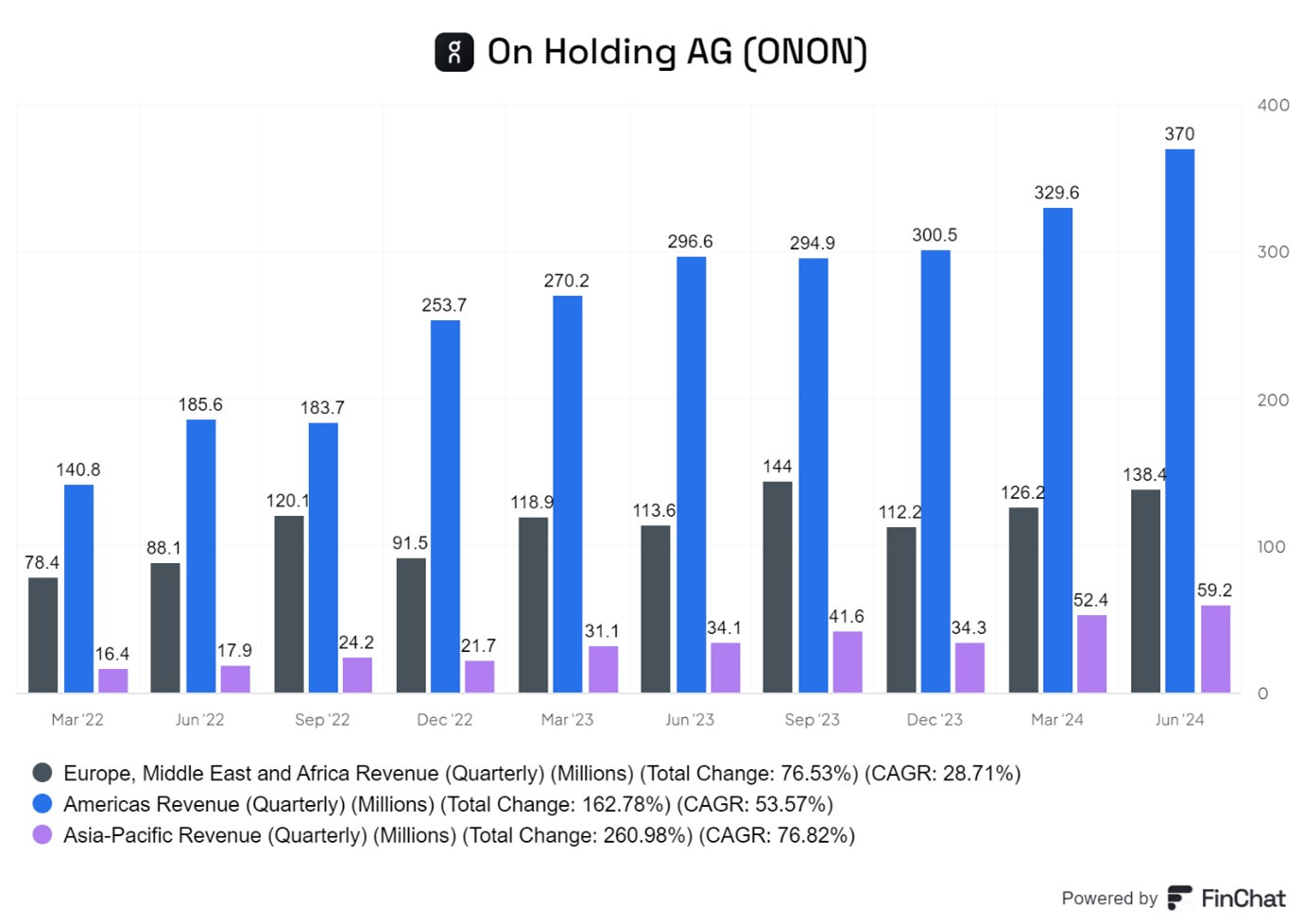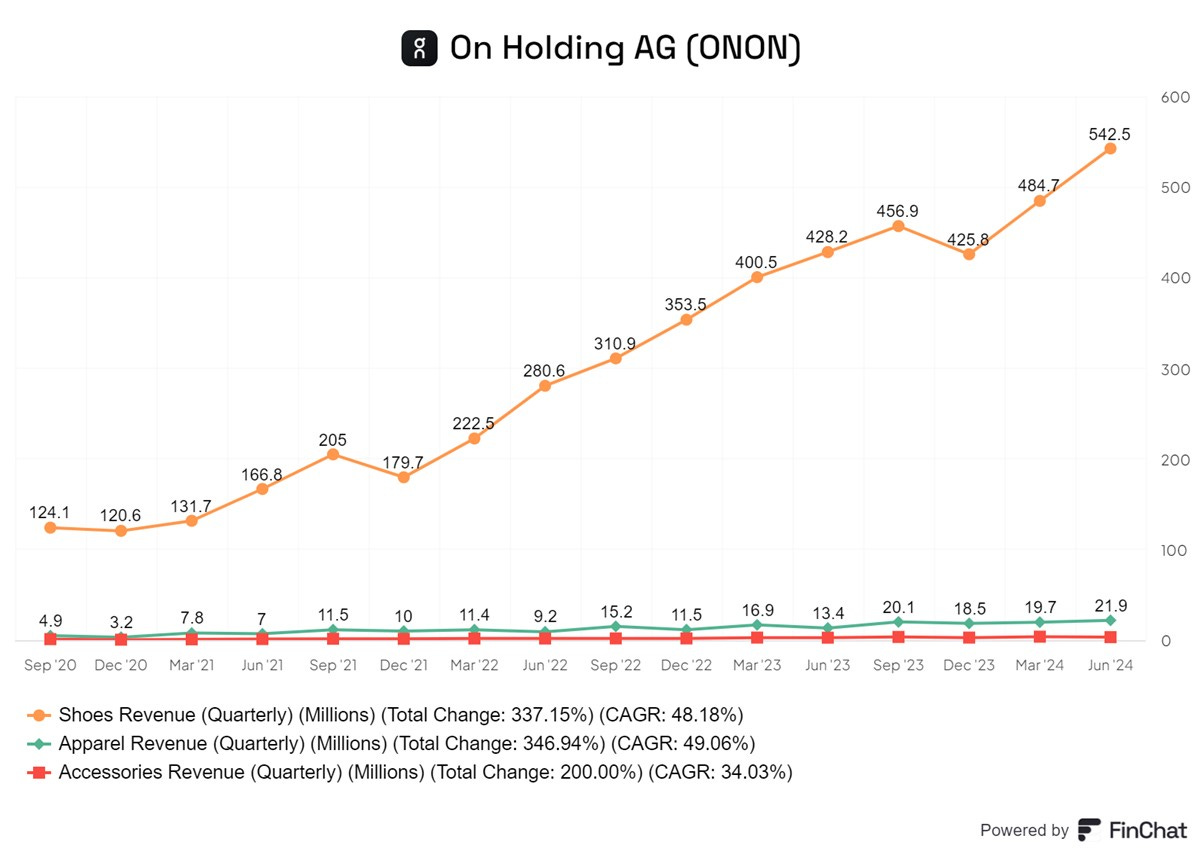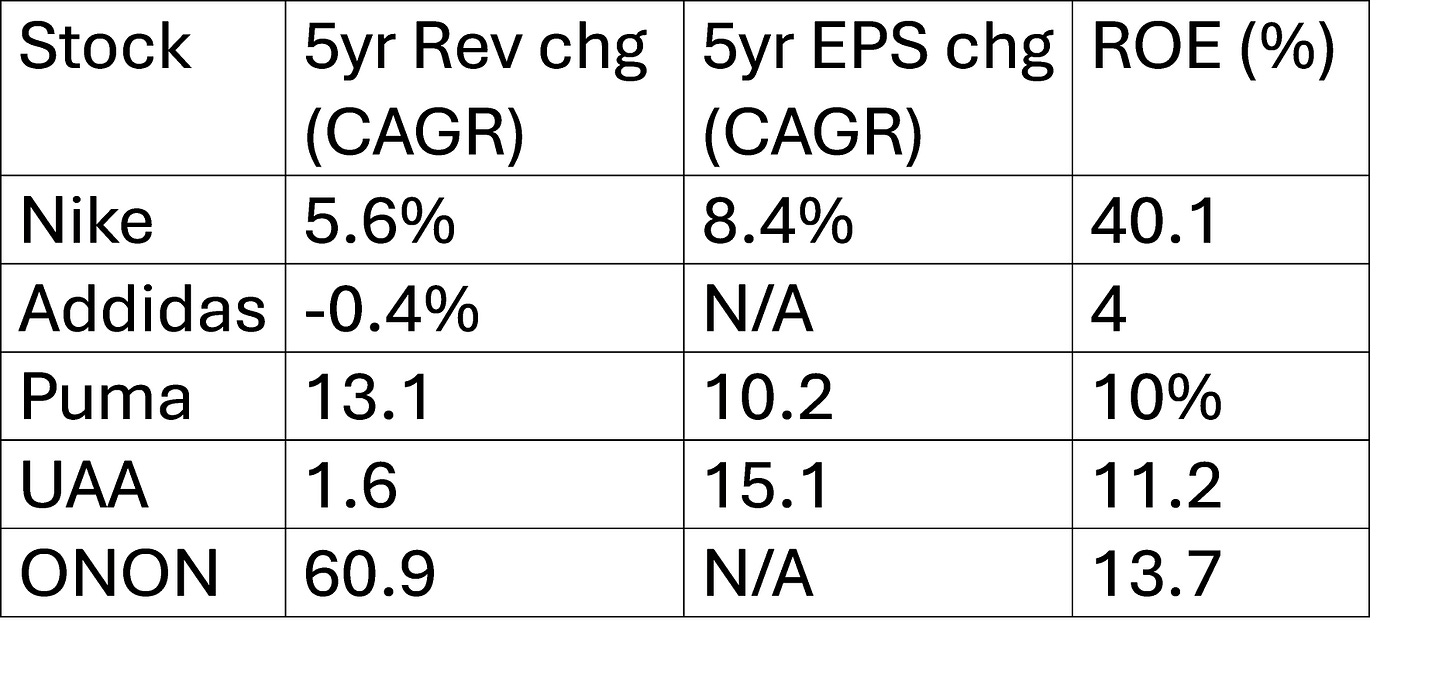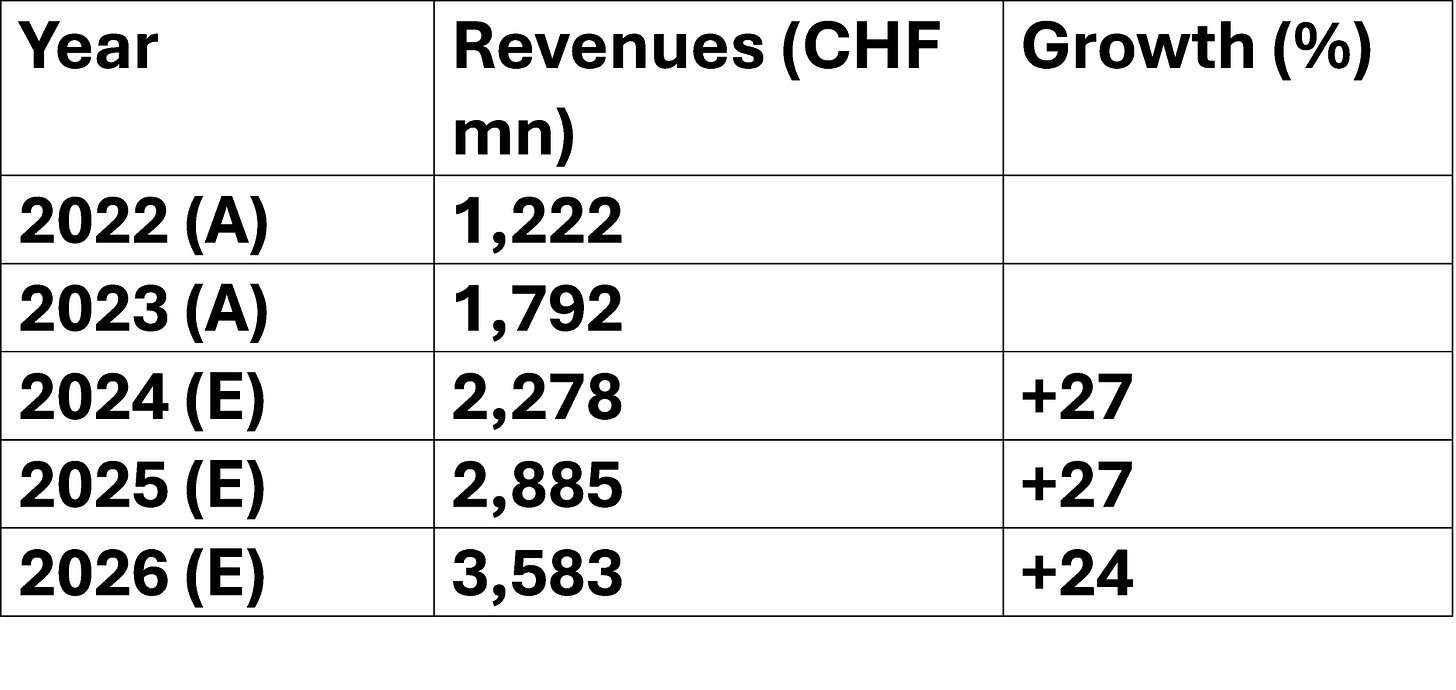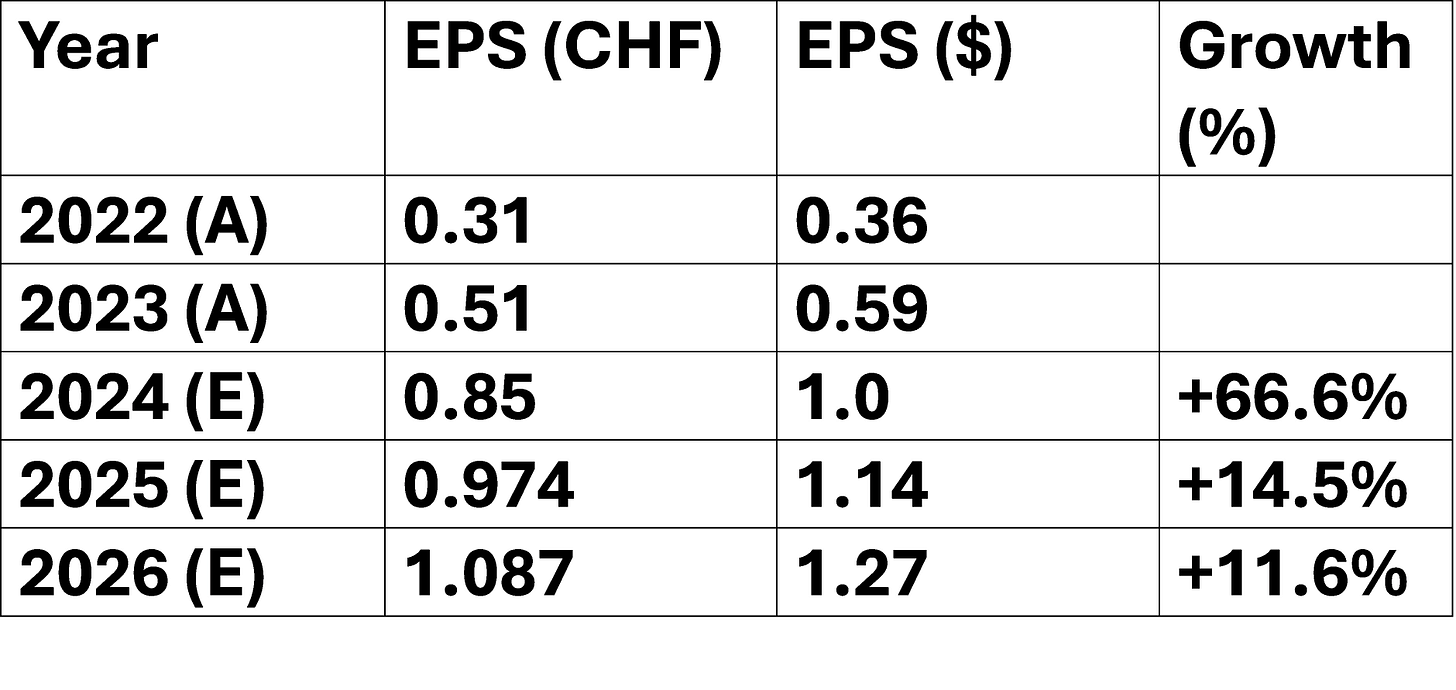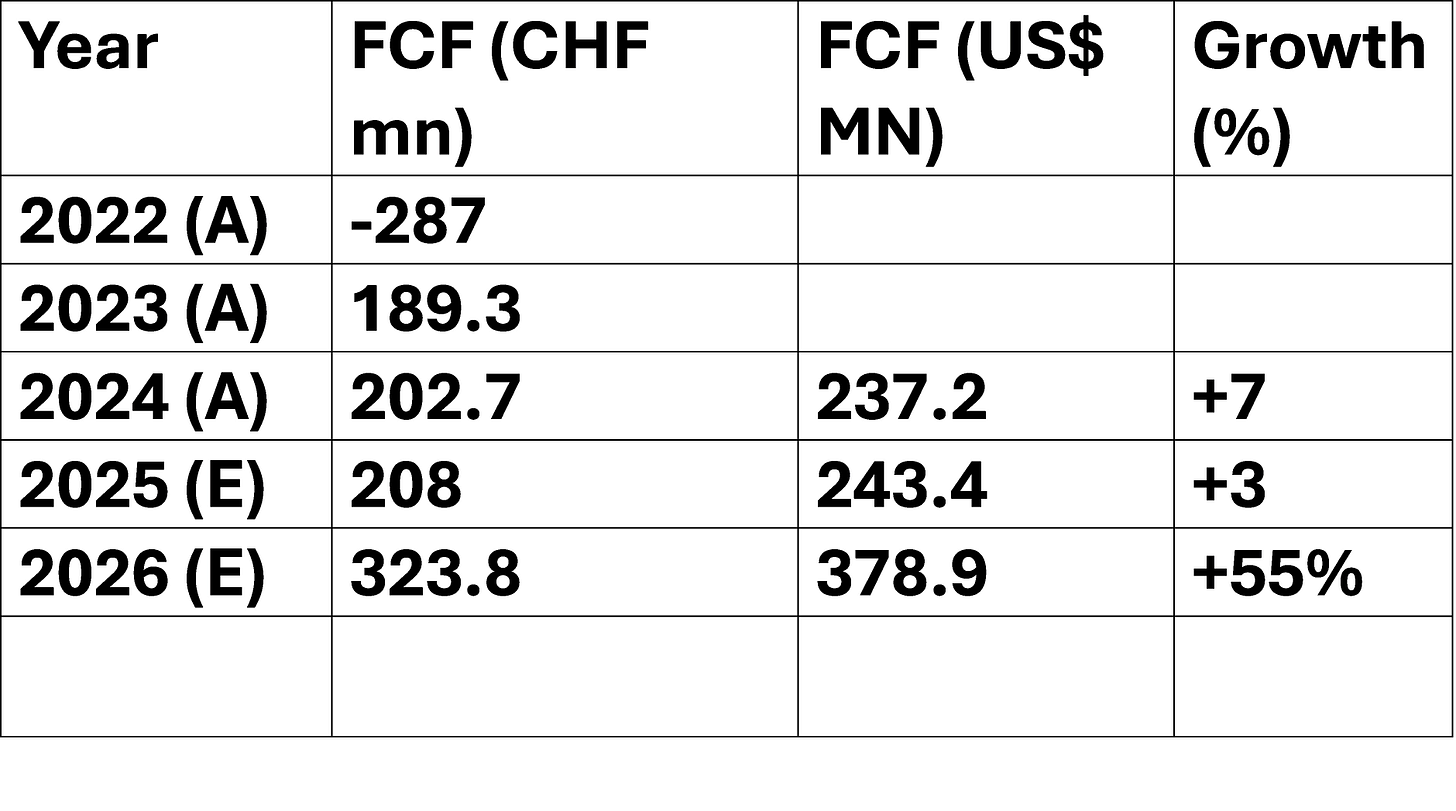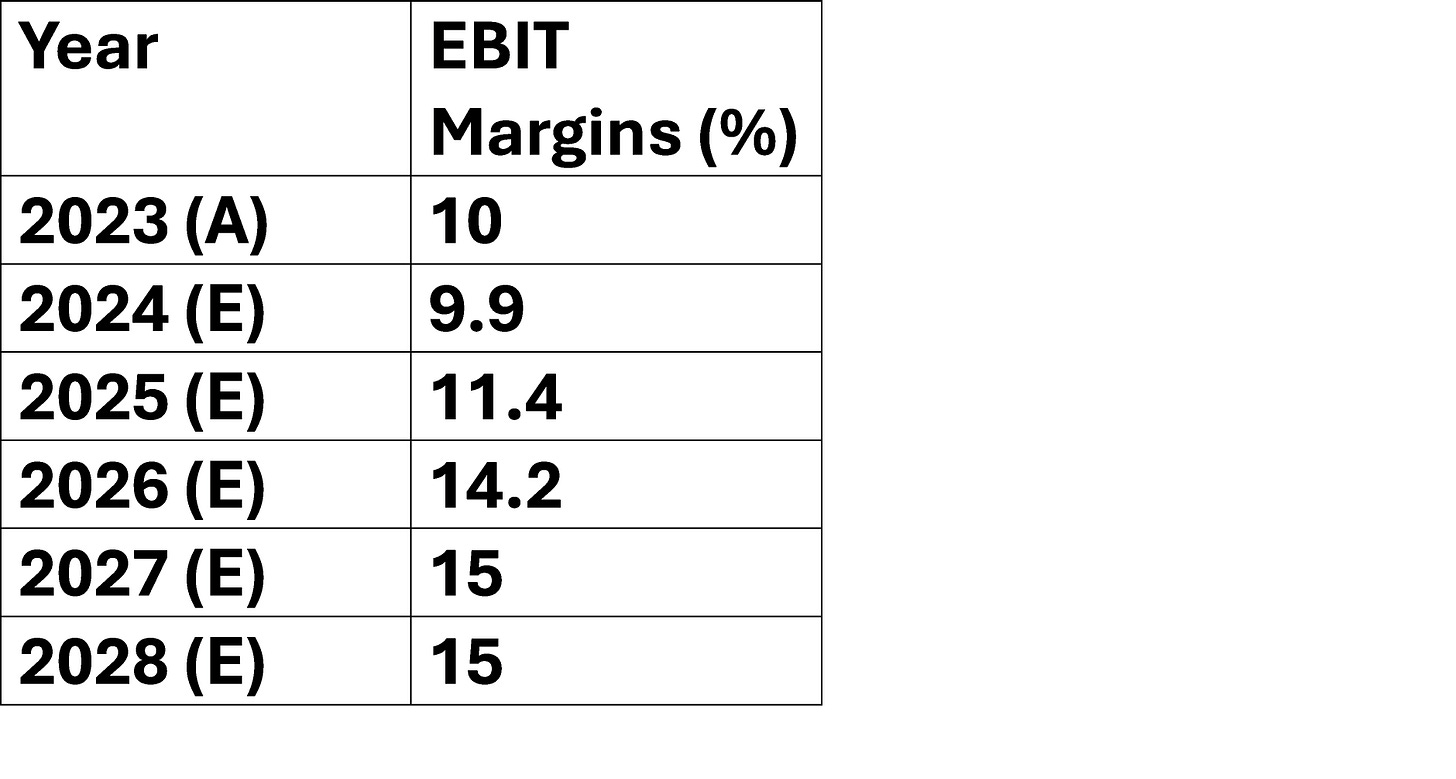On Holdings (ONON)
On Holding AG is a Switzerland-based company active in the athletic footwear and sports accessories industry.
The Company provides footwear and sports apparel and is engaged in designing and distributing high-performance sports products, through independent retailers and global distributors. In addition, the Company sells products in its own flagship stores and online.
History of On Holdings
In 2005, Olivier Bernhard, Swiss triathlete and Ironman champion laced up his shoes for the last time in serious a competition. At the end of a successful sporting career, he focused on a new challenge: create the perfect running shoe.
Olivier Bernhard of Switzerland when he won the Ironman triathlon for the second time in three years in 2000.
After tinkering with dozens of prototypes, Bernhard approached his former sponsor, Nike Inc but they rejected it. Bernhard admitted, had he been in Nike’s position, he might have laughed himself out of the room as well, because the prototype he presented was “hideous”.
Bernhard partnered with Caspar Coppetti, and David Allemann to launch On Holdings in 2010. In 2013 they added Marc Maurer and Martin Hoffmann who are currently the co-CEOs of the company.
The company’s name was inspired by the feeling Bernhard had running in their shoes: “He seemed to be floating above the ground - like running on clouds
ONON delivers industry-disrupting innovation in premium footwear, apparel, and accessories for high-performance running, outdoor, and all-day activities. It designs the products but manufacturing is outsourced.
ONON’s award-winning CloudTec® innovation has attracted a fast-growing global fan-base and driven strong sales growth. ONON is present in 9800+ stores in more than 70 countries globally
ONON’s various shoe brands
ONON has about 2,000 employees. By comparison, Nike has over 76,700 and Adidas around 57,000 employees.
The Head Office and R&D centre is in Zurich. ONON has six other offices around the world. More than 30% of Zurich’s space is dedicated to research and product development.
The company has always had a global focus.
“As a Swiss company with a small home market, we opted to expand globally from the very beginning, and today we have a fast-growing presence across a number of international markets including, among others, Germany (first entered in 2011), the United States (2013), Japan (2013), China (2018) and Brazil (2018). We believe this global presence within the large global footwear and apparel market positions us well for future growth.”
The company has 40% of the running shoe market in Switzerland and 10% in Germany. The United States is its biggest single market, and it has a 6.6% market share there in the Performance Running Shoe Category.
The company was listed in the US on NYSE in (2019). In the last three years, the stock has given a return of 12% CAGR in US$ dollar terms. In the last one year, ONON has given a return of 89% in US$ dollar terms.
Products
ONON claims it has a proprietary cushioning technology in its shoes as its unique selling point. It is a patented design called CloudTec. CloudTec began life with Bernhard experimenting with a garden hose, exploring how that shape could offer a brand-new type of cushioning.
A series of “clouds” run underneath all ONON shapes and offer cushioning as the foot lands on the floor, before locking together to create a solid foundation for pushing off on the next step.
“The benefit of it is basically that playing with the structure of it helps you to tune the cushioning for softer landings. As the clouds are compressed in the forefoot it creates a firm and stable platform to push off," explained Edouard Coyon, On’s head of footwear product management in an interview.
The shoes are easy to spot. They have perforated soles, uncluttered designs, and a stacked-letter logo that sets them apart from Nike and Adidas etc.
Design and Innovation
ONON has a heavy focus on R&D. The founders patented a technology developed at the highly- respected Federal Institute of Technology -ETH Zurich.
“The heart of ON lies in our lab. Our scientists are always experimenting to achieve new and better, from improved energy return and impact protection to increasing product sustainability. And like every athlete out there, we revise, refine and re-engineer at every opportunity – to continue to help others achieve amazing things.”
In 2012, ONON released the Cloudracer, a performance shoe favoured by Swiss professional triathlete and London 2012 Olympic gold medal winner Nicola Spirig. Spirig was European Champion six times and the only female triathlete to have own two Olympic Medals.
They have developed a range of products with names such as “Cloudsurfer,” “Cloudswift,” “CloudPulse”and “CloudTilt” among others and have registered a number of patents.
Running shoes remain a core focus but they have also diversified into Tennis, training shoes and active leisure footwear as well as apparel and bags. Tennis Superstar Roger Federer became a shareholder in ONON in November 2019. A limited-edition lifestyle shoe named “The Roger” was subsequently released by the company in July 2020.
Federer’s sponsorship deal with Nike was not renewed and he switched in 2019 to Uniqlo for clothing and ONON for shoes.
All ONON products are engineered in Switzerland, and in-house research and development teams work on the innovation, engineering, design, development and testing. ONON has a focus is on sourcing renewable raw materials. They claim their products use sustainable materials such as recycled polyesters and polyamide, organic cotton, vegan leather and PFAS-free membranes.
Production
For manufacturing, ONON relies mainly on contract manufacturers in Vietnam, Turkey and China.
About 60% is sourced from Vietnam and 26% from Turkey. They have a notable country risk or exposure. ONON are highly dependent on assemblers and suppliers of specialist materials.
Several suppliers are the sole source for certain components of footwear, apparel and accessories. They experienced significant disruptions during the Covid 19 Pandemic.
Identifying a suitable supplier is a long process as it requires them to be to be satisfied with their quality control, responsiveness and service, financial stability and labour and other ethical practices.
Marketing / Brand Awareness
If the ONON founders in 2012 had approached a business consultant, he or she would probably have advised against launching ONON. The sector was dominated by large brands such as Nike, Adidas, Puma, Hoka, Brooks and many others with huge marketing budgets. In this situation it would be very difficult for a start-up to have the money and staying power to create a rival brand.
ONON have followed a particular strategy to increase brand awareness and boost sales.
Athlete advocacy: They focused on getting professional athletes to use their shoes in competition. Swiss triathlete, Nicola Spirig was the first to come on board and many others followed.
ONON has established On Athletics Club (OAC) – a training group of distance runners. They include Hellen Obiri -two-time winner of the Boston Marathon and two-time Olympic silver medallist.
Hellen Obiri with the ONON logo visible
More information on OAC can be found here. 66 OAC athletes from 25 different countries participated in the Paris Olympics. The athletes display the ONON logo on the world stage which lead to good PR and create brand awareness.
Grassroots: Another ONON strategy is the “Try On” experience. They host community runs retail stores where thousands of active runners are invited to test and discover the brand.
Brand ambassadors: Roger Federer and the US singer Zendaya have been used in this capacity. Their “air tennis” match was viewed by millions and can be seen below.
The video below gives an excellent insight on Federer ‘s role in building up the On Brand and his involvement with On’s business.
Tennis players, Iga Swiatek and Ben Shelton are also sponsored by ONON.
Poland’s Iga Swaitek , the no1 ranked women’s player currently is sponsored by ONON. Photo also shows the logo for Infosys, a company we have also recently covered.
Ben Shelton, US tennis player is sponsored by ON for clothing and shoes.
Digital and social media: ONON has a growing social presence driven by storytelling and athletes. This is supplemented by both physical and digital live events. The company believes this offers significant opportunities to further grow brand awareness and expand the size of their community.
The authenticity gained via word of mouth, recommendations from athletes, influencers, tastemakers and a global community of runners and explorers has proven extremely valuable in organically growing then brand.
Distribution
ONON has two distribution channels
The wholesale channel where they sell via various well-known retailers.
The Direct to Consumer (DTC) stores are their fully-owned stores. This also includes an e-commerce channel.
The sales split between Wholesale and DTC is 65% /35%. In the last five years, Wholesale has grown at a CAGR rate of 49.7% while DTC has grown faster at a CAGR of 72.4%. Going forward, DTC is expected to be the larger driver of future growth.
Wholesale Channel
The wholesale channel consists of nearly 10,000 stores run by channel partners such as Foot Locker, JD sports, Dicks Sporting Goods, Bloomingdales El Corte Ingles, various running shoe specialists and many others. In 2022, They had distribution agreements with 23 partners distributing to 72 markets.
“We intend to take a measured approach to attract new customers and enter new markets through selected retail partners that are complementary to our brand. We started with the run specialty channel and then selectively expanded to additional premium retail partners to reach a broader audience, building on the initial momentum and brand halo gained by our presence in specialty stores.”
DTC Channel
The DTC channel, both digital and physical, according to ONON “enables greater consumer engagement and offers an optimal environment to showcase the brand.”
“We believe that this customer experience will lead to a continued increased share of our DTC channel in the long term.”
ONON built their first flagship retail store in New York City in 2020, selectively adding Tokyo and Los Angeles in 2022. London was opened in 2023 and has been a great success.
Retail stores are a key growth pillar in Asia particularly China. They operate 13 owned retail stores located in Shanghai, Chengdu, Shenzhen and Beijing. They target premium shopping locations in major cities where they can directly connect with the most promising customers. The main New York store is in Lower Manhattan while the main London Store in in Regent Street.
Physical stores acts as a strong enabler for brand build and awareness across channels. They saw a 3x higher baseline e-commerce traffic in the UK after the opening of their Regent Street store.
All stores are under operating leases. Leases generally have initial terms of between five and ten years, and generally can be extended in five-year increments.
They also operate e-commerce digital platforms in over 60 countries, which are serviced by both their DTC channel and the wholesale channel as well.
The DTC channel is served by large fulfilment centres. In Q3 2022, they entered into third party logistics and warehouse services agreement for a new, highly-automated fulfilment center in Atlanta, Georgia to facilitate future omnichannel growth in North America and lower handling cost over time through automation.
Key Financial Numbers
Revenue has grown about 9X since 2019 in US$ terms. The rate of growth has slowed but it is still an impressive 28.5% (y/y).
The company was loss making until 2021 but has been profitable in the last two years.
Company has been generating positive operating cash since 2021.
The company first turned free cash flow positive in 2023.
Gross margins are 60% but Operating Margins are 10%. Operating expenses are about 50% of revenues. This in part reflects high marketing spend but the company expects this to fall over time as revenues grow.
Long-term leases have grown as a percentage of total liabilities as the company hs built out new stores.
Interest cover as measured by EBITDA-Capex/ Interest Expense is quite healthy at 14.6X
Cash and short term investments are much greater the the leases so there is no worry that the total long-term leases amount is too high.
In the chart below we can see current assets of $1.5bn are much higher than current liabilities.
Days Sales Outstanding (DSO) has grown in the last year to 51.5 days. DSO will fall over time as the DTC channel grows over time and a higher percentage of sales are done through that channel.
Profitability
ROE is 13.1% while ROIC is 16.1%
Information on Revenue
Revenue by category is dominated by shoes (96%) but they are seeing equally good growth in the other categories.
By Channel. Wholesale channel is growing at 44.1% CAGR but DTC is growing faster at 56.2% CAGR.
Dual share Structure
The company has a dual class share structure. These have disappeared from most markets but some remain in Switzerland and Continental Europe.
For ONON, each Class B voting rights share has 10 times the voting power of each Class A ordinary share.
Only members of the extended founder team hold the Class B shares and they also hold the Class A ordinary shares . They hold approximately 59.7% of total combined voting power of the outstanding shares
The dual class structure has the effect of concentrating voting control with the extended founder team for the foreseeable future and effectively completely limits minority investors ability to influence corporate matters. This not ideal but as we are only very small potential minority investors, this is not a major concern though it has to be considered and monitored.
Competition
ONON faces a lot of competition including Nike, Adidas, Puma, Under Armour, Hoka (part of Deckers) and Brooks (owned by Berkshire Hathaway) and many others.
We can do a comparison between them below:
Source: Stockopedia
OONON is growing much faster than other players in the market. This indicates their high-priced products do seem to have a strong customer appeal. Nike and Puma are more pedestrian performers though the former is quite profitable (ROE=40%).
As we were writing this report, Nike reported negative quarterly results, and their share price fell sharply. Many consumer-discretionary brands are seeing hard times due to the slowdown in China and weakness among consumers in the developed world and Nike is facing these headwinds. However, there may be also be some company-specific factors in Nike’s poor numbers. There is a feeling that the brand has been mismanaged and is declining in the face of competition from Hoka (a Deckers brand) and ONON.
ONON Growth Strategy
Growth drivers
New categories of shoes
Apparel
Bags
US and APAC
Shoes have proved to be very popular amongst runners. ONON has also had success in Tennis. They have extended beyond these categories to training and “active” living. ONON are likely to expand in other areas.
Apparel, bags and other accessories have been growing fast from a low base and this is likely to continue. Total apparel market size is $355bn . Withing this the premium market is $70bn, $25bn of which is addressable by ON. This is huge potential market but it is for the future. It is a source of optionality for investors.
While North America accounts for 60% of its business, logistics constraints have slowed sales growth. Once these are addressed, US sales are likely to grow strongly. ONON has been expanding its presence Asia, where sales have nearly doubled in the last two years, albeit from a low base. APAC demand, especially China, is likely to grow strongly.
Highlights form the most recent conference call
New technology
As an example of innovation, ONON highlighted a new technology called LightSpray. This is an ultralight, one-piece upper that’s sprayed onto the shoe by a robotic arm in three minutes.
“Our groundbreaking innovation LightSpray has been equally discussed in 325 media articles around the world over the past weeks. And more importantly, this new technology has already been validated by the amazing performance of all athletes in their competitions.”
“LightSpray came to life after one of our team members saw the potential to use a hot glue gun to spray a shoe like Spiderman would do with web fluid. 14 years ago, we backed this crazy dream, as one of our innovation moonshots with resources at On Labs.”
This video shows the LightSpray
“ON will always there to take bold bets on our mission towards achieving long-term innovation led success.”
Sales
The lack of adequate warehousing capacity meant that some demand could not bemet in the USA.
“US sales would have been higher but for the ongoing transition of our Atlanta warehouse led to some product availability constraints.”
Excess demand means there is no recourse to discounting and everything is sold full price.
“We’re pleased to see that the growing brand awareness drives strong full price demand to our existing wholesale partners across key accounts and specialty retailers, both in their physical, as well as digital channels.”
DTC Sales
“Our D2C channel continued to outperform wholesale and reached CHF209.4mn in Q2, growing by 28.1% (y/y).”
New store openings continue to meet the huge demand.
“Excited to open our second store in Manhattan in a few months.”
“We also opened our first ever store in Hong Kong, which we celebrated with some of our closest partners and tastemakers in the region. It is early days, but the store has clearly exceeded our internal expectations.”
“ During the last year we expanded our network to 12 stores outside of China and 25 stores in “China and we gained a lot of additional confidence in the power of the channel to drive growth, high engagement levels with new and existing customers increasing and strong apparel shares and very importantly additional profitability.”
UK
“We continue to see exceptional momentum in the United Kingdom across all channels. but from a smaller base.”
Americas
“The region contributed CHF370mn in Q2, by far our largest quarter in terms of absolute net sales and representing a reported growth rate of 25.8%.”
“We already mentioned the impact of the ongoing transition of our Atlanta warehouse, which was even more visible in our D2C than our wholesale channel. But this transition is essential to scale our distribution capabilities in the US in the long-term and to ultimately fulfil the incredible brand momentum and demand that we continue to expect in the region.”
Asia-Pacific (APAC)
In the APAC region, we grew by an incredible 73.7% in Q2 to reach CHF59.2mn.
“From the continued strong momentum in China, daily queues in front of our store in Japan, record sales in very nascent markets such as Indonesia or the Philippines and the already mentioned success of our new-store in Hong Kong.”
“Current demand is clearly exceeding supply.”
Distribution Challenges
“While we build our brand by relying on a certain level of scarcity, we are not fully and consistently delivering to our own high expectations from an operational perspective.”
We are in the process of building a fully automated warehouse in our Atlanta facility. And so, as a result, we are temporarily operating out of a space that is simply not optimized. And so as a result we experience capacity constraints in that warehouse. And this then leads into basically unreliable late deliveries, but also inventory shortages.”
The management believes that ONON has arrived at the big boys table.
“This is a space where established brands historically had a monopoly almost on the headlines of innovation, athlete stories and sporting emotion, we firmly placed ourselves, we believe not just as a contender, but a leading sportswear brand with a strong point-of-view.”
New Store Growth
New store growth will slow as a core number of stores in key locations has been achieved.
“We've been growing the store base by roughly 10% year-over-year. We are more looking at 5% right now.”
“We feel we are very well on-track when it comes to existing store and new store growth in all key markets and we are super happy where we stand with our partners, when it comes to basically executing on the guidance that we gave you.”
Summary of Management Outlook
“we're not just basically kind of reaccelerating our existing consumer base, but we're also tapping into new consumer segments.”
“This give us a lot of confidence to reiterate our 2024 constant-currency net sales growth rate expectation of at least 30%.”
“Gross profit margin guidance for the full-year at and adjusted EBITDA margin for the full-year in the range of 16% to 16.5%.”
Their stated long-term goals are as follows :
· 20% -25 net sales growth
· 20% + Ebitda Margins
· Apparel share should go more than 10% of Revenues (currently 4%)
· China share should go to more than 10%. (currently 3%)
Summary
Through impressive innovation and marketing, ON Holdings has established itself as a significant player in a very competitive sector.
It has developed a set of products and an offering that has seen sales growing at 60.9% CAGR, much faster than its much larger competitors.
In the last five years the company has become free cash flow positive and profitable.
The company is seeing excess demand for its products and has faced some issue meeting supply.
The company is increasing its product range and expanding in Asia. That is likely to result in a further boost to demand.
ONON’s products have premium pricing and demand growth is at risk in the event of weakness in the global consumer sector or a change in taste /fashion.
Valuation
The consensus analysts’ forecasts for revenues are as follows:
The consensus analysts’ forecasts for EPS are as follows:
The consensus analysts’ forecasts for Free Cash Flow (FCF) are as follows:
At the current price of $51.7, ONON stock is trading at a three-year forward P/E Ratio of 40X.
At the current market cap of $16.6bn, the stock is trading at a three- year forward Price to Free Cash Flow Ratio of 43X.
These numbers imply a three-year forward Earnings and Free Cash Flow yield of about 2.2%. On the face of it, these are low but reflect the growth that is being priced in at the current valuation of the share.
We conducted a Discounted Cash Flow (DCF) Calculation.
We use the prior revenue assumptions noted above.
We made the following additional assumptions. On Operating Margins, we assume the following:
We also assume a risk-free rate of 3.6% and a Market Risk premium of 3%. The Stock Beta is 2.2. These numbers result in a Weighted Average Cost of Capital (WACC) of 10.2% which seems quite high. Finally, we assume that in FY 2028, the terminal exit multiple for EV/FCF is 27X.
With these assumptions, we calculated a theoretical ONON stock value of $37.7 – a 27% discount to the current stock price of $ 51.7.
If the terminal exit multiple for EV/FCF is increased to an aggressive 37X, we get a theoretical value of $ 51.8.
An EV/FCF ratio of 37X look aggressive but may perhaps be justified for a high growth company
Conclusions
In our view all fundamental equity analysis comes down to two questions.
Is the company under consideration, fundamentally a good business?
If it is a good business, is it available at a fundamentally attractive price?
In the Case of ONON, the answers are yes and maybe respectively
We believe ONON is great company. It has done well. It is achieving great sales growth and, if this continues, it will be a high growth and very profitable company.
However, a lot of the growth is priced in the current share price, and it looks expensive in the light our moderately aggressive assumptions
The shares at $51.7 per share are trading at too high a level.
One strategy would be to wait patiently (Patience is a virtue!) until the share price to fall back towards $ 40 per share.
The alternative strategy would be to buy a nominal 1%- 2% of the portfolio and look to add to the stock if it fall to $40 per share.
We have decided to follow the second approach and invested 1.5% of our portfolio in ONON. We will add to it if the stock falls to $40 per share.




